Other instruments that are part of Andrew’s instrument collection that are not classified in the other mainly western instrument categories. This includes sub-categories of western European and South American instruments and for Eastern European, Asian and African instruments.
Eurasian and African Instruments
West European and American Instruments
-
Baglama Saz
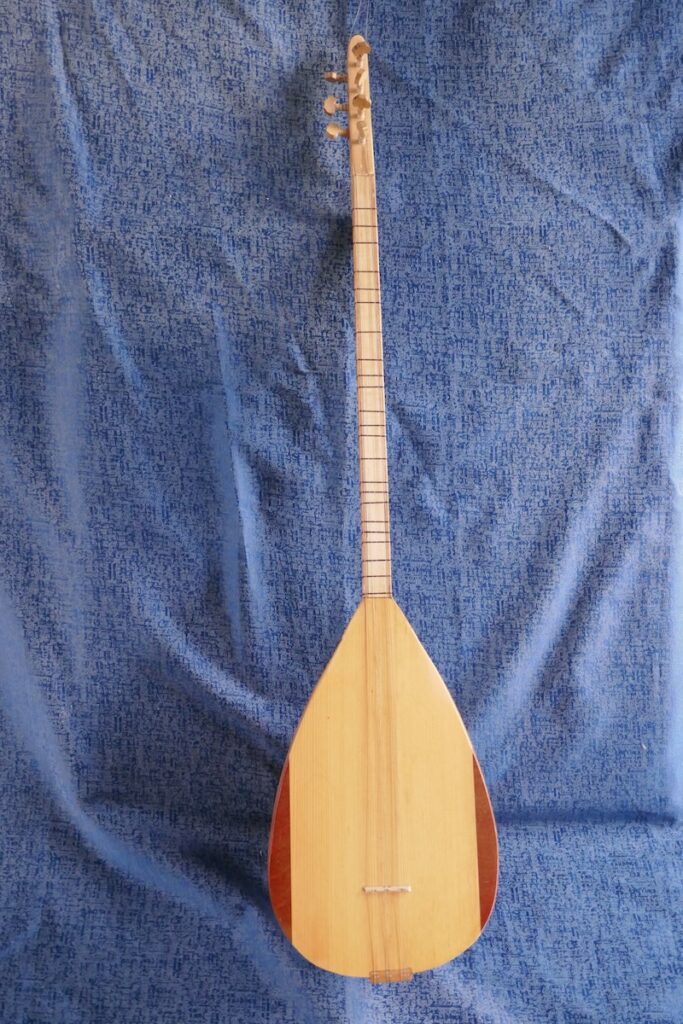
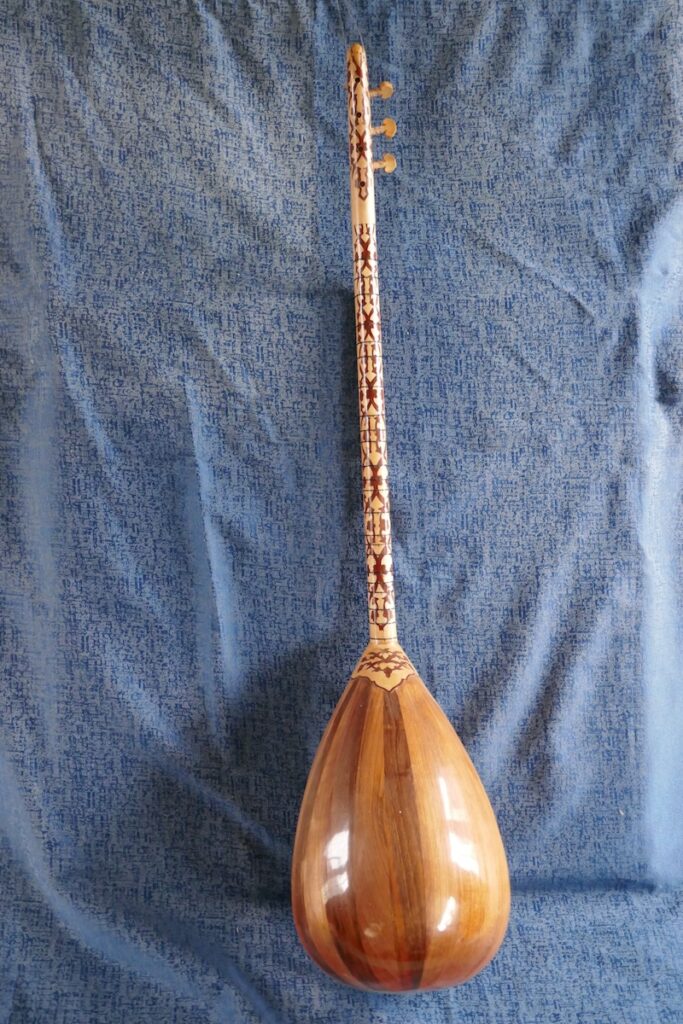
The saz (or bağlama) is an instrument of middle-eastern origin. Naming conventions vary a bit but this larger saz is often known as a bağlama. I also have a smaller one known as a cura saz.
-
Balalaika


The balalaika is an instrument of Russian origin. It has 3 strings with a typical tuning of E4, E4, A4.
-
Breakneck bowl lute – 8 course

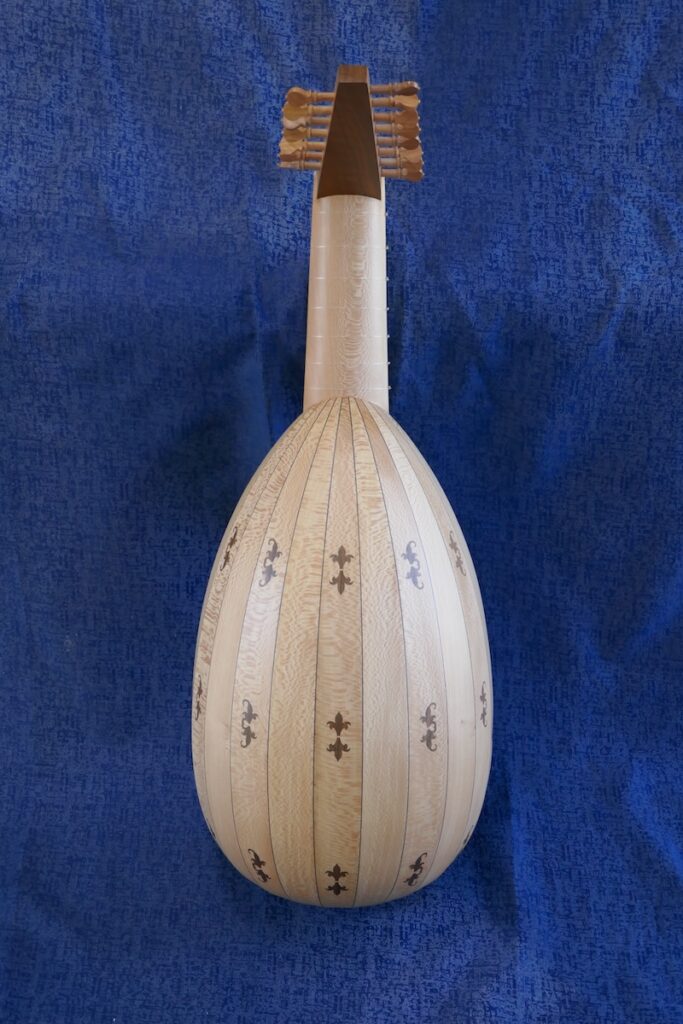
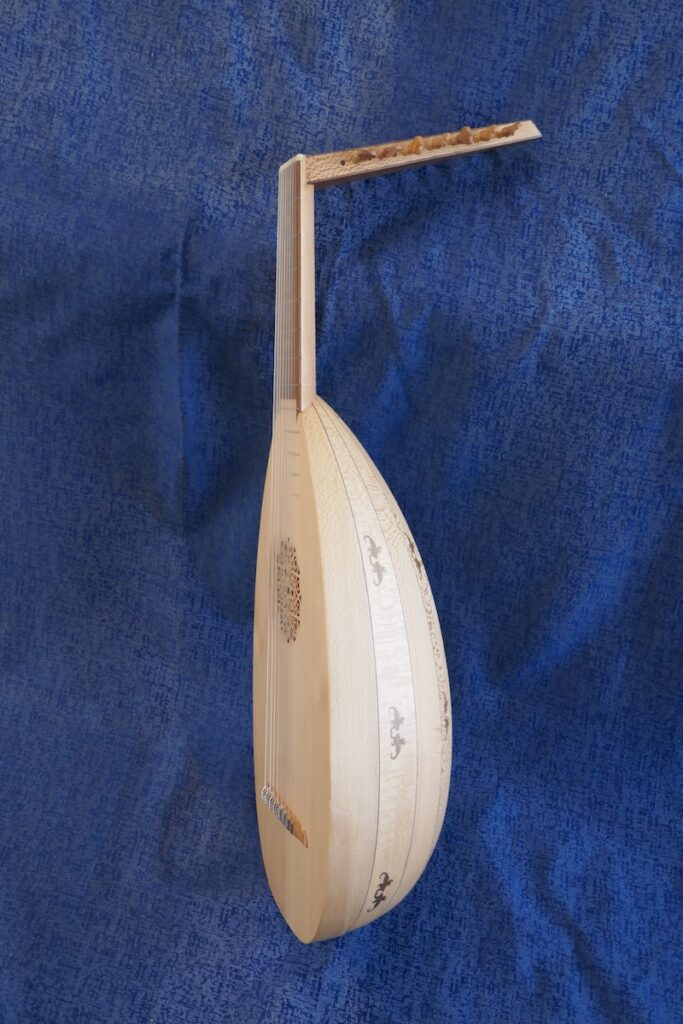
Breakneck bowl lute which is an 8 course renaissance lute made in Pakistan. Renaissance lutes generally had between 6 and 8 courses with the highest course being a single course and the rest double with the lower courses often strung in octave pairs.
-
Cavaquinho


The cavaquinho is a small instrument with the main varieties originating in Portugal and Brazil with the Brazilian ones like this being slightly larger. Typical tuning is D G B D.
-
Charango

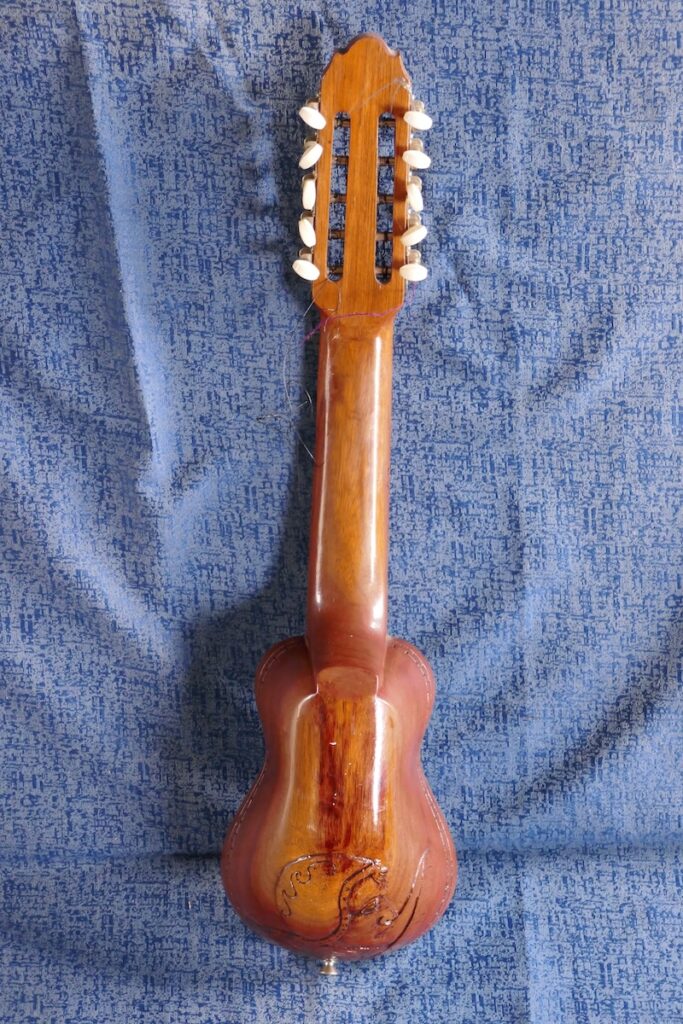
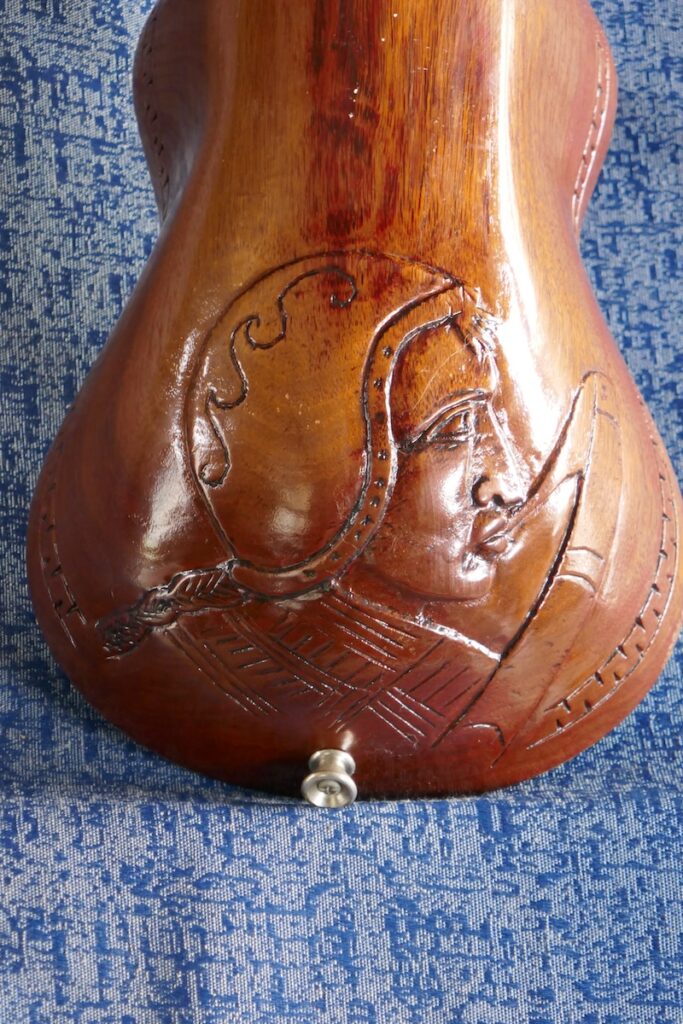
The charango is a small Andean instrument generally with ten strings (mine are nylon) arranged as 5 courses. Traditionally the back was formed from an armadillo shell but like most modern versions mine has a wooden back. Typical tuning is a re-entrant tuning of G4/G4, C5/C5, E5/E4, A4/A4, E5/E5.
-
Cuatro
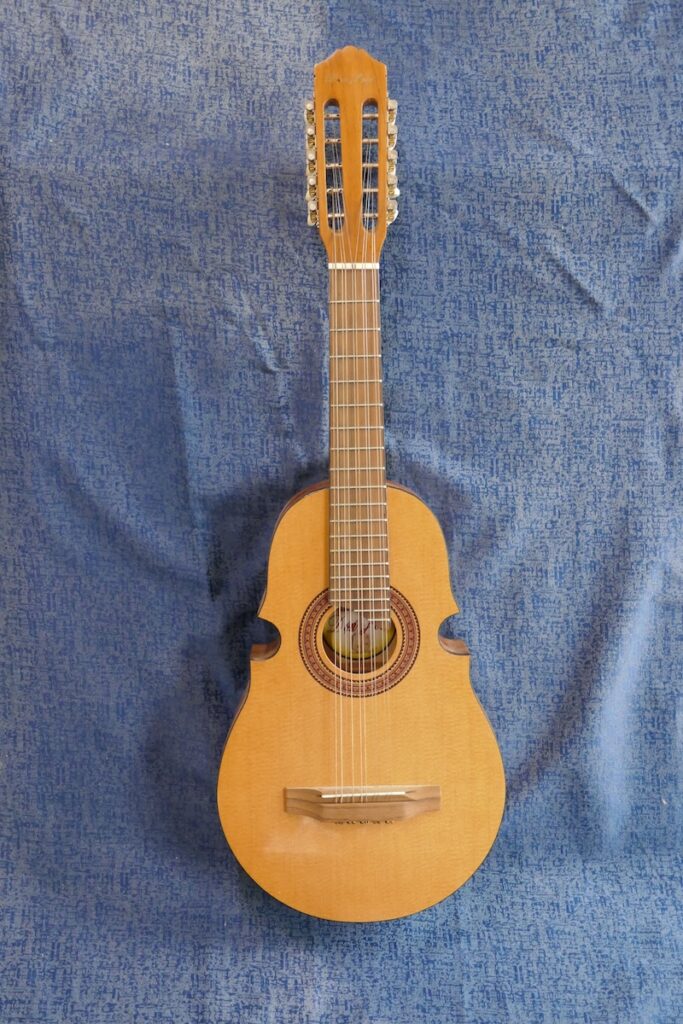

This is a Puerto Rican style cuatro with the more violin-like waist. It has 10 strings arranged as five courses which is one of the more modern versions. As the name relates to four other cuatros have 4 strings or 8 strings arranged as four courses. Typical tuning is B3/B2, E4/E3, A3/A3, D4/D4, G4/G4.
-
Cura Saz
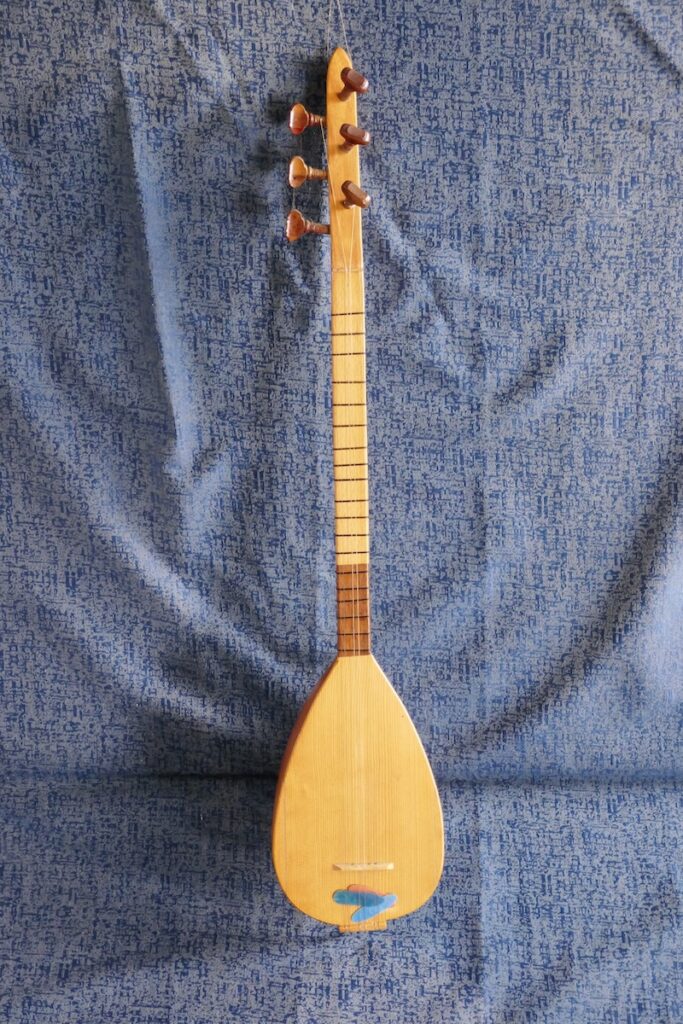
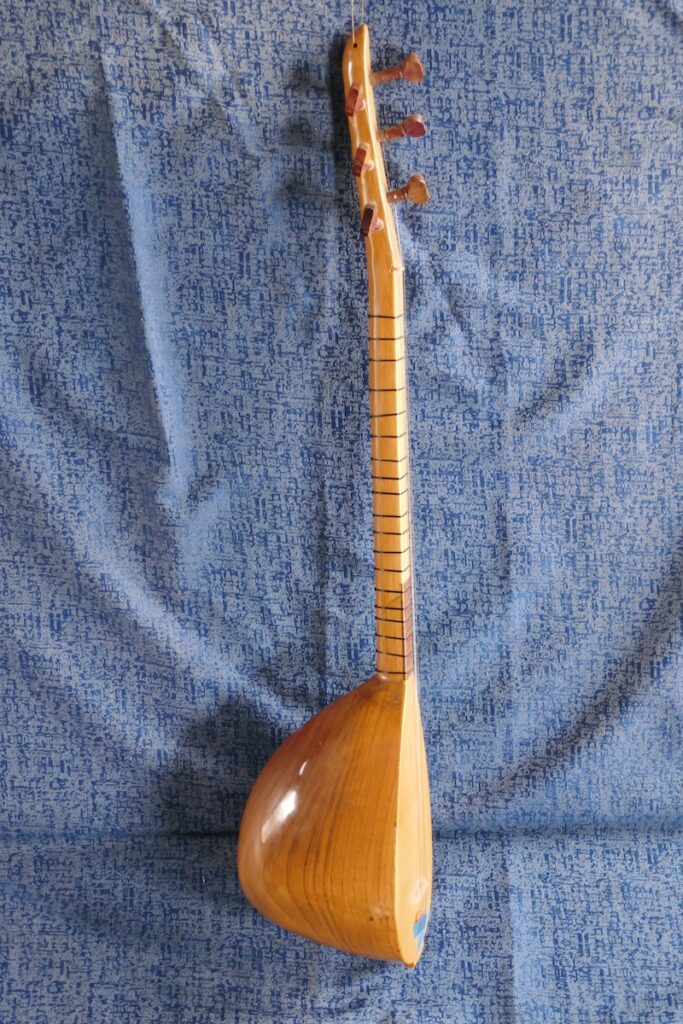
The cura saz is an instrument of middle-eastern origin, especially the areas around Turkey. Naming conventions vary a bit but this small saz is often known as a cura saz. I also have a larger one known as a bağlama saz.
-
Kora
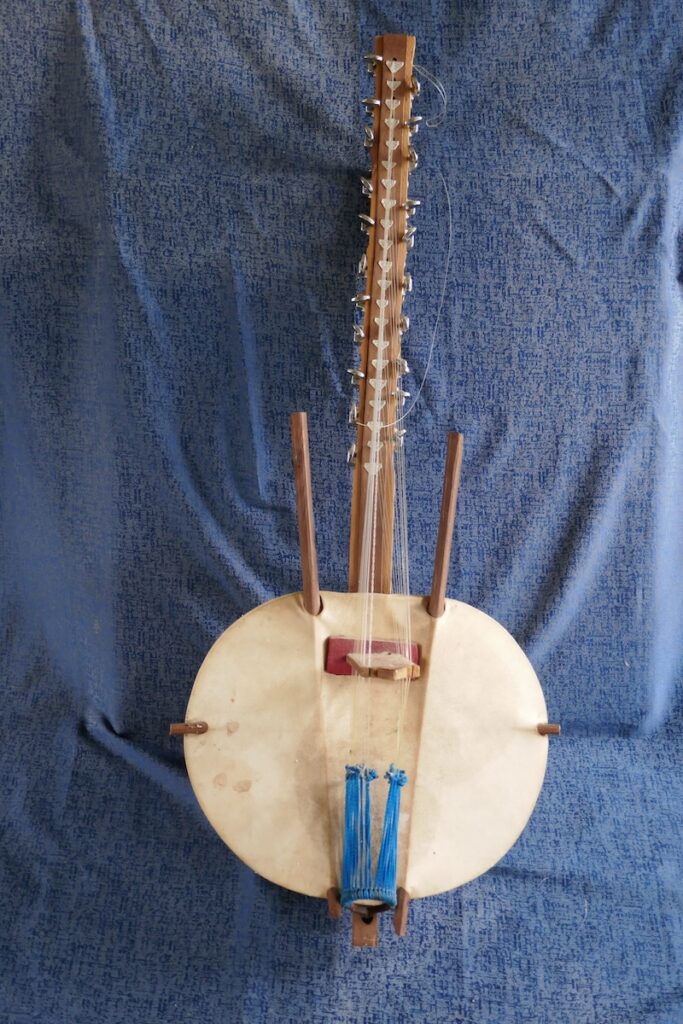
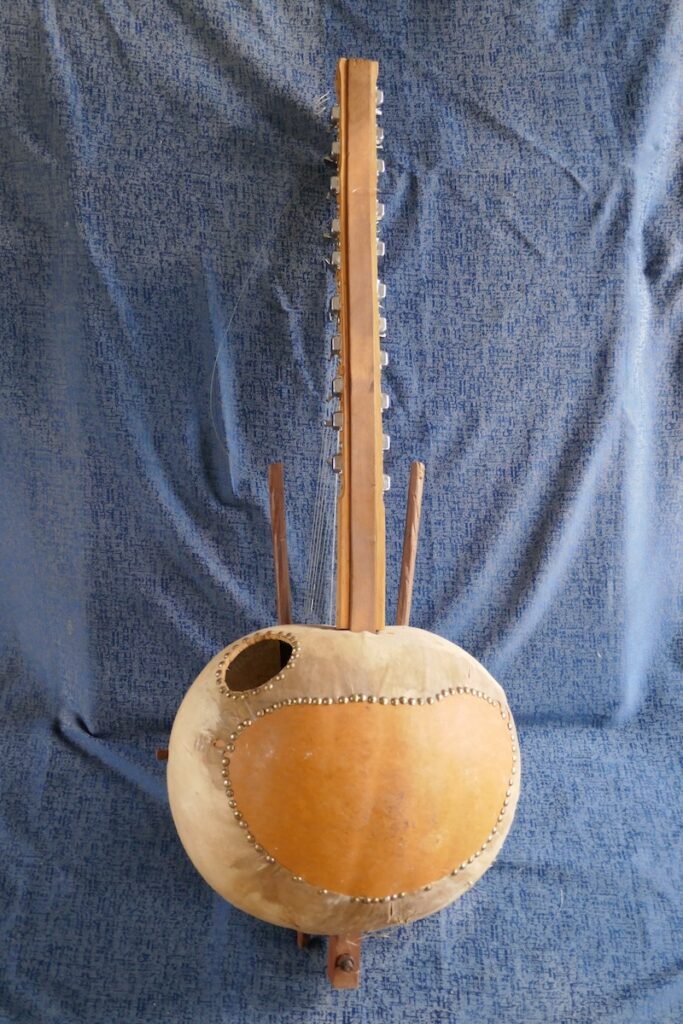
The kora is an instrument from West Africa with the body made of a gourd covered in animal skin. It has 21 strings and has similarities to a harp in that strings are not fretted, however playing techniques are very different to the harp. This one has guitar tuners rather than the traditional leather rings.
-
Lokanga voatavo (also known as Tzetze or zeze)
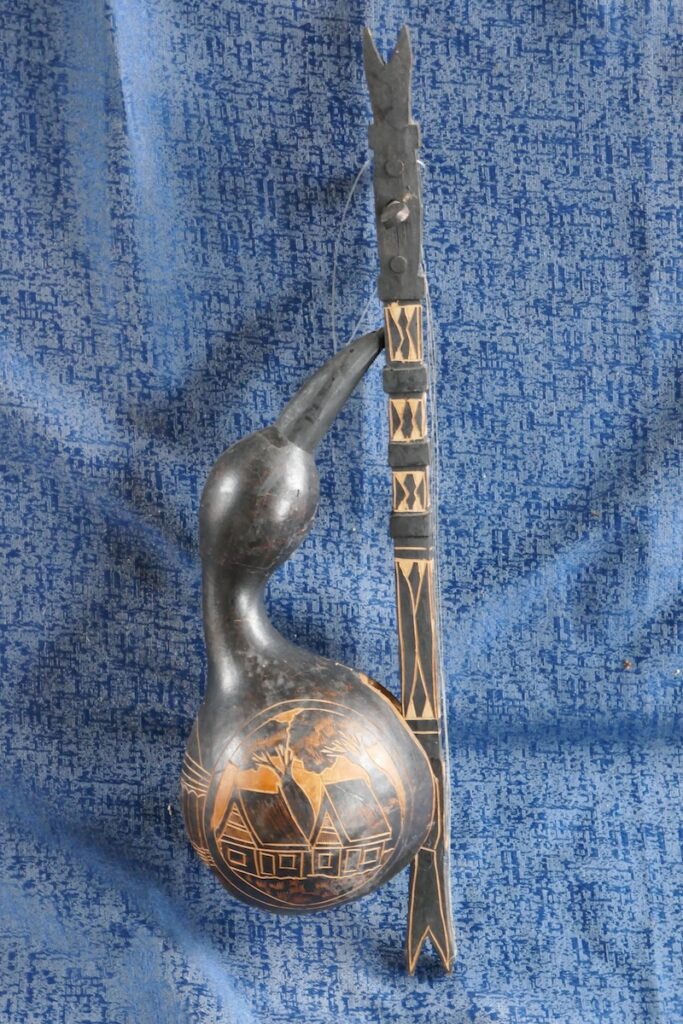
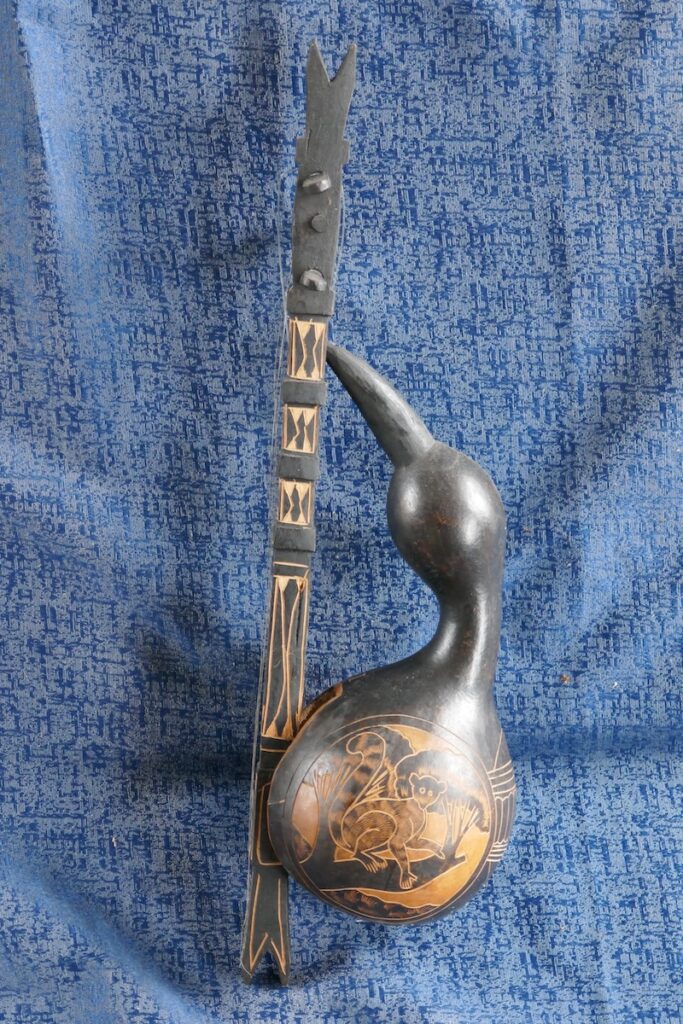
I think this is a lokanga voatavo (lokango voatovo) or tzetze or zeze which is a small African instrument. This one has 3 strings on a stick attached to a gourd.
-
Oscar Schmidt Requinto
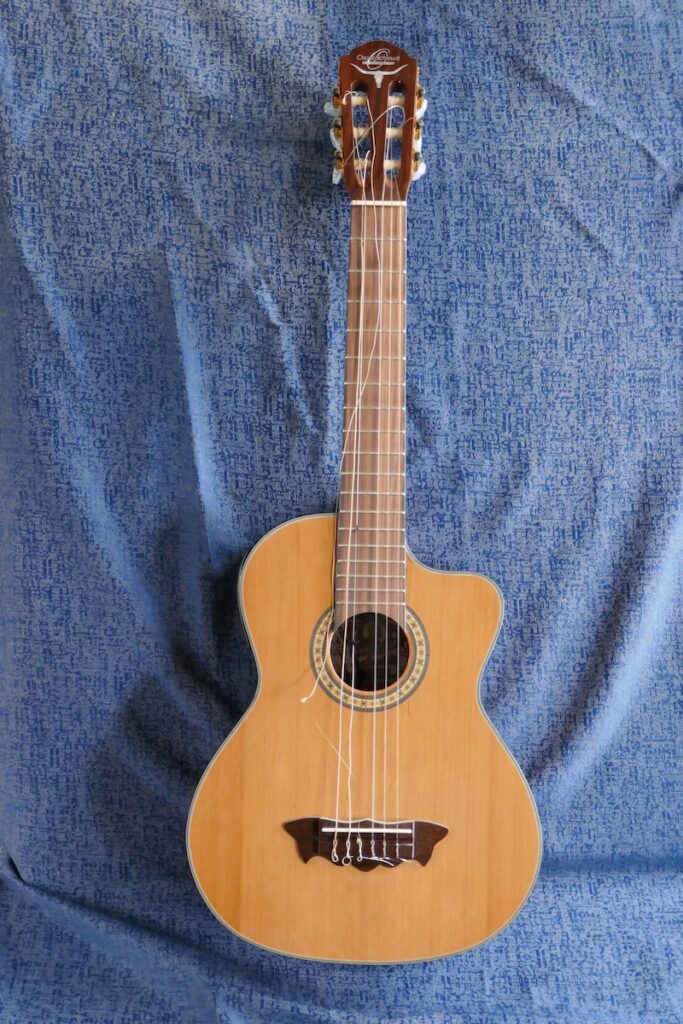

The requinto is a short scale relative of the flamenco/classical guitar from Mexico and Spain. Typical tuning is a fourth higher than guitar A2-D3-G3-C4-E4-A4. One of several instruments on the list for the next restringing session.
-
Oud

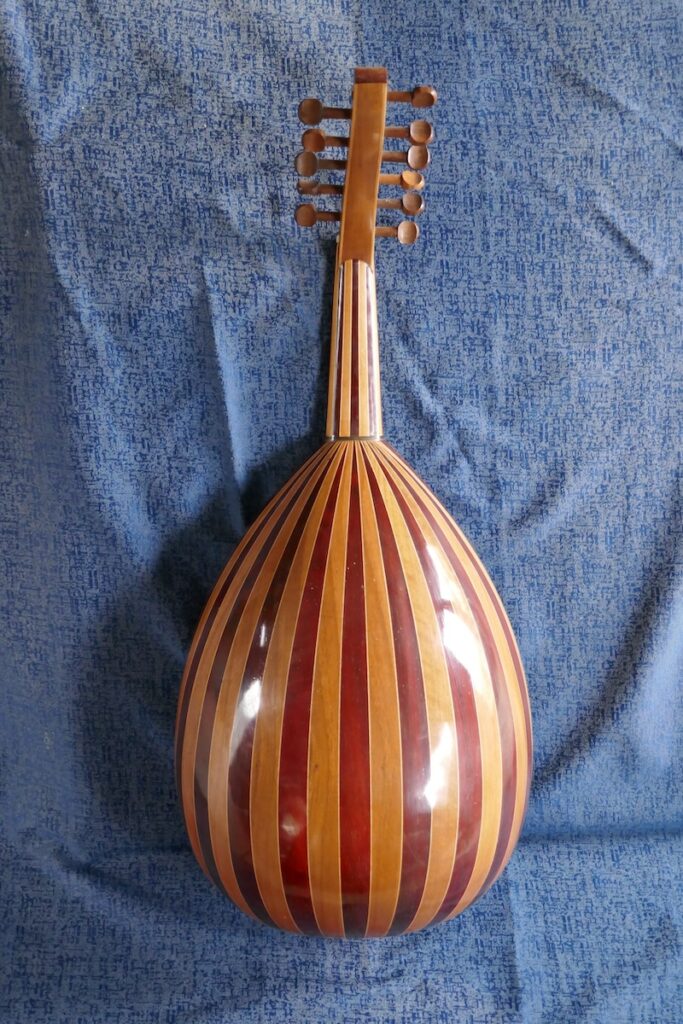
The oud is of middle-eastern origin and is a precursor to the lute. This one has 11 strings arranged in 6 courses. Common tunings are D2, G2/G2, A2/A2, D3/D3, G3/G3, C4/C4 or C2, F2/F2 A2/A2, D3/D3, G3/G3, C4/C4. Unlike lutes ouds are fretless.
-
Phin


The phin is an instrument from Thailand. It has 3 strings with a typical tuning of E A E. Like dulcimers it has diatonic rather than chromatic frets.
-
Pipa
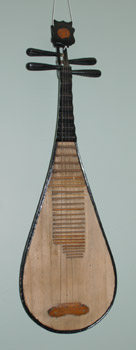

The pipa or Chinese lute is a traditional Chinese instrument with four strings. Typical tuning is A2, D3, E3, A3. One of the tuning pegs on this pipa is broken and needs repair or replacement.
-
Regal Tiple


The tiple has many different variations depending on which part of America (mainly South America) they are from. The Regal tiple is of the North American variety developed by Martin in around 1919. It is similar in size to a tenor ukulele but has ten steel strings arranged in four courses. Typical tuning is A4/A3, D4/D3/D4, F#4/F#3/F#4, B3/B3. This tiple is currently unplayable as it needs repairs to the headstock.
-
Sanxian
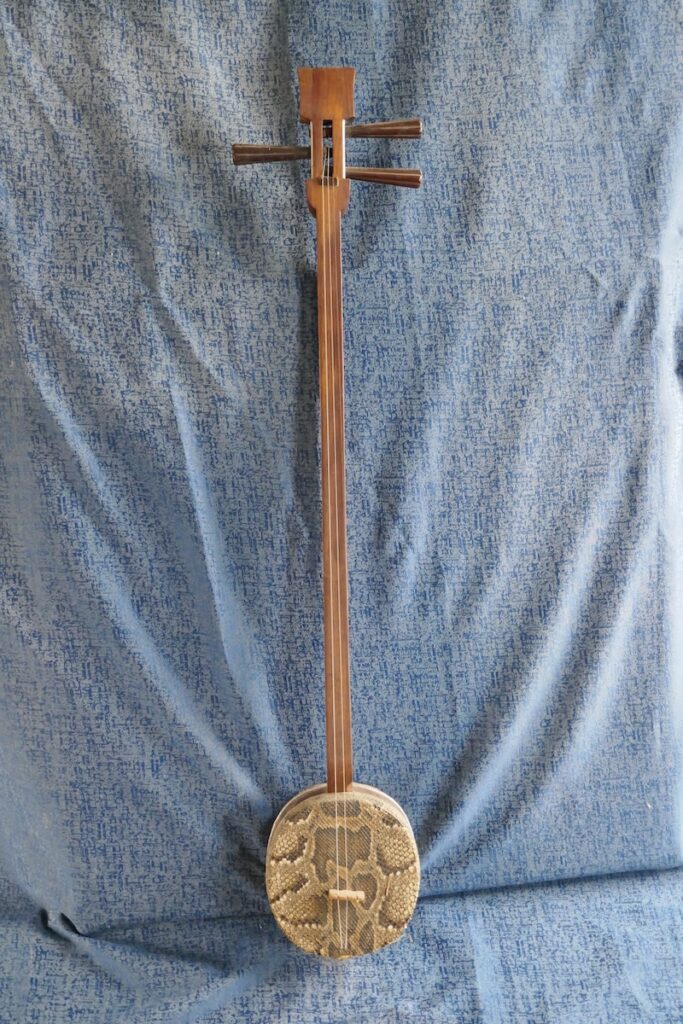
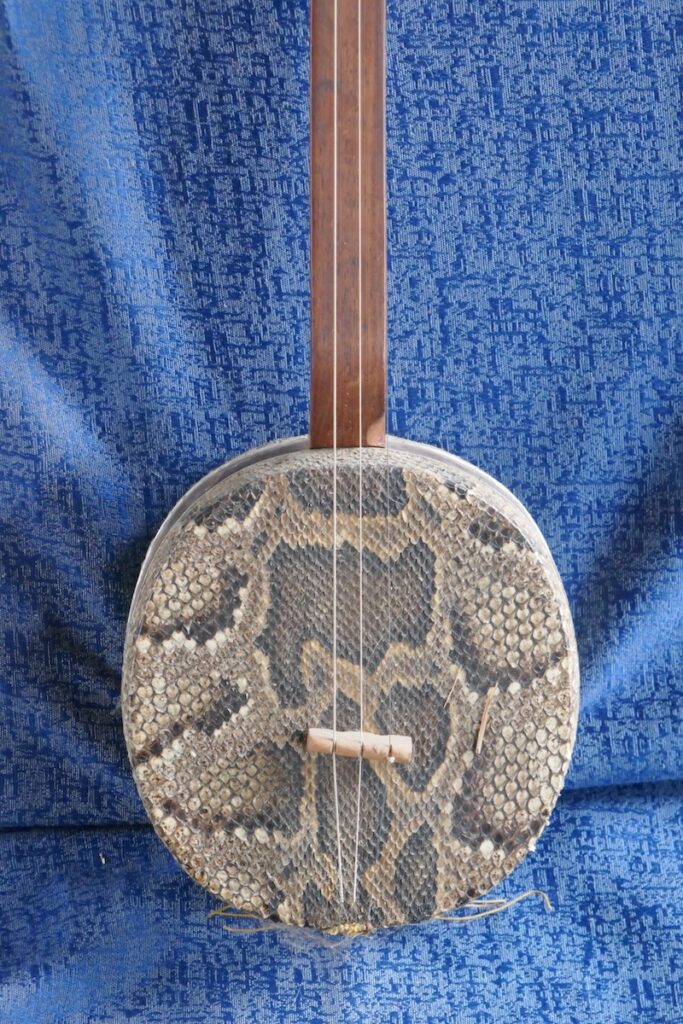
The sanxian is a traditional fretless 3 string instrument from China with snake skin used as the head.
-
Sitar
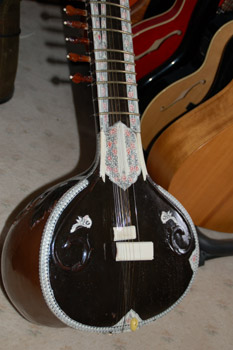
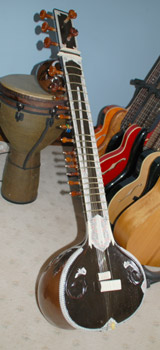
The sitar is an instrument of Indian origin.
-
Tres


The tres (Spanish for three) is an instrument of Cuban origin with 6 strings arranged in 3 courses. Typical tuning is G4/G3, C4/C4, E4/E4.
-
unknown bowed instrument
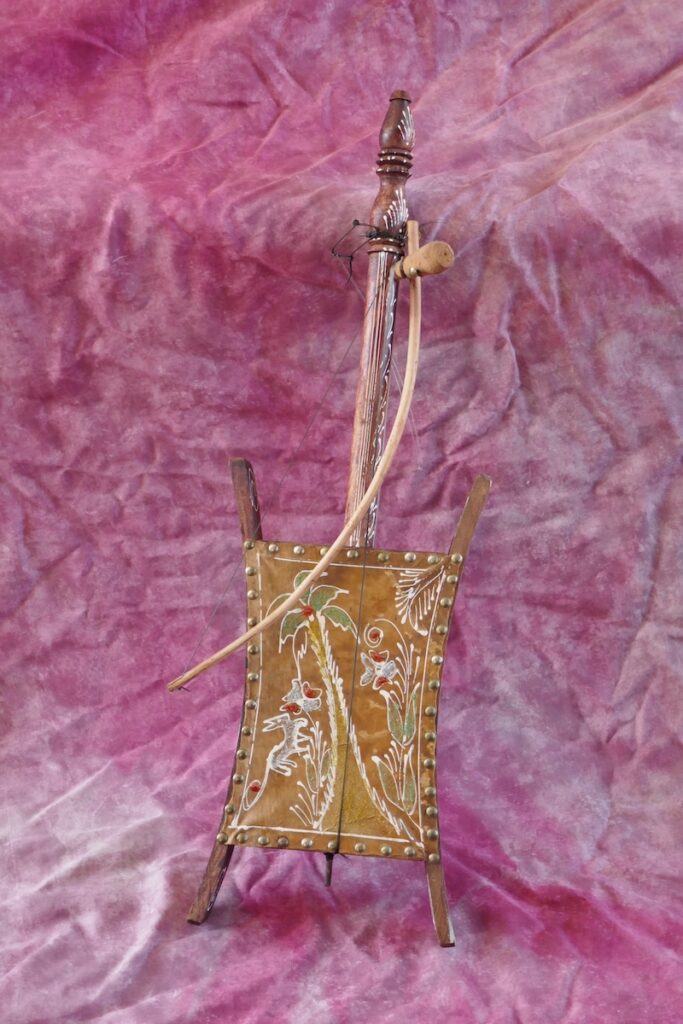

I have forgotten what this is so will have to find out. It is a single string instrument for use with a bow.
Possibly a rebab or rebaba which do have a wide range of shapes depending on which country they are from.
-
unknown single string instrument
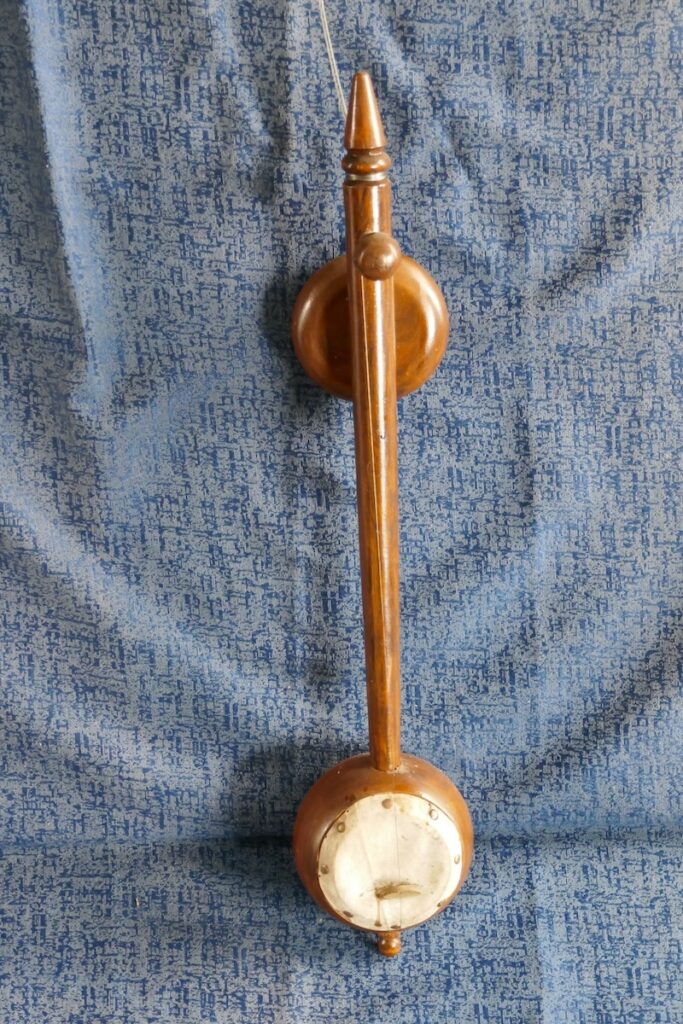

Looks a bit like an ektara or tumbi but has the second resonator at the back.